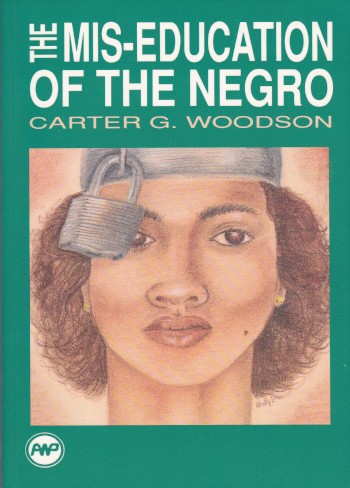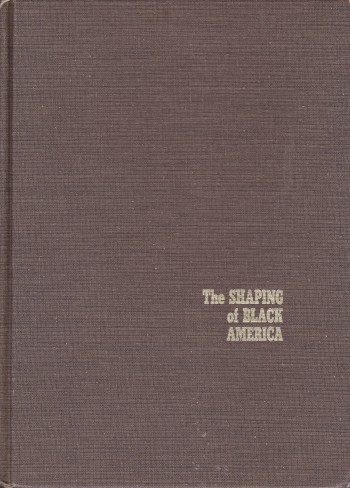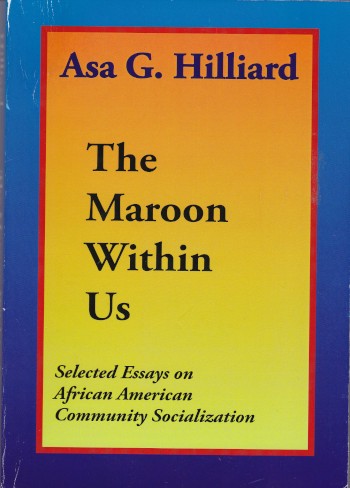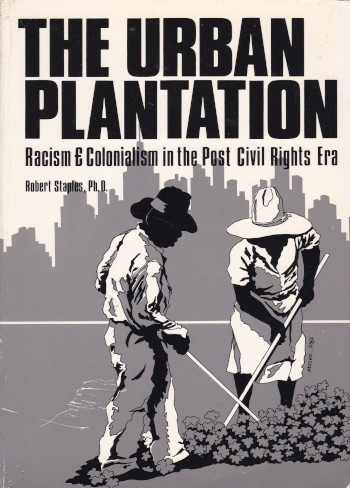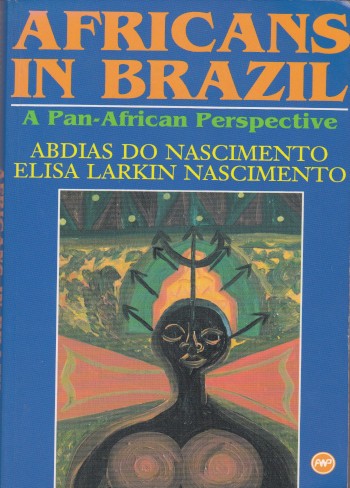
Abdias Do Nascimento and Elisa Larkin Nascimento’s Africans in Brazil: A Pan-African Perspective is a penetrating and dauntless work that correctly highlights the African experience in “Latin” American societies, as well as their relationship to the rest of the African world. One the most pernicious and genocidal ideologies that was created and spread by the Portuguese settler colony of Brazil is that racism does not exist in Brazil and that it is in fact a racial democracy. About a decade ago on a trip to Venezuela, we actually met some white liberals from Brazil who—without batting an eye—told us that Brazil was free of racism unlike in the United States. They then proceeded to say, “In fact the best parties are in the favelas.” It could never have occurred to these racist, white liberals from Brazil that we actually knew Africans from Brazil who recalled to us countless horrific narratives that ran contrary to their promulgation of Brazil being free from racism. Then there is objective history of Brazil—which obviously according to white, racist liberals we could not have possible studied. Africans were enslaved in Brazil for little over a century before our enslavement in what would become known as the United States; and while our chattel enslavement ended in 1865, our sisters’ and brothers’ enslavement in Brazil ended in 1888!!! No racism my ass!
This is the reason we found Africans in Brazil: A Pan-African Perspective an invaluable tool for the objective of revolutionary Pan-Africanism, for if we are ever to achieve true African sovereignty, we must have a foundational understanding of our experiences as a people in the world. The Nascimentos bare truth to the genocidal lie of racial democracy in Brazil in the chapter “Pan-Africanism and Negritude”:
Brazilian mystifications about race mixture, cultural syncretism, and social democracy culminated in the postulation of a supposedly “universalist civilization” dubbed Luso-Tropicalism, the invention of Gilberto Freyre (1959). It seems that the mirage of this happy civilization said to have been created by the Portuguese led leaders like Leopold Senghor, as President of Senegal, to welcome and honor certain spokesmen of racial democracy at international cultural events. Apparently, these Africans were unaware of the fact that such people build their careers and prestige at the cost of rationalizing the continued exploitation and marginalization of African Brazilians (109).
The vaunted axioms of Brazilian society created by Freyre gets even more asinine:
Freyre is a prolific creator of mirages, coining phrases like metaracial brunettism and similar euphemisms, in his attempt to depict Brazilian racial harmony in the rosiest hues possible. Metaphorically, he goes to the extreme of harnessing Africans to the sinking ship of colonialist illusions, by characterizing black Africans, “despite being slaves, as co-colonizers of Brazil, with considerable acculturating influence over the Amerindian, who was less culturally developed than the African Negro.”
The advocacy of a notion so preposterous as the idea that a people conquered, hunted, captured, and kidnapped from their home in chains of bondage should be considered “colonizers” of the nation that held them captive shows to what lengths the Brazilian ruling class will go to convince itself of its own nonracism (109-110).
As if this malarky propagated throughout Brazilian society is not bad enough, advocates of racial democracy view the literal mass raping of African women as an idyllic civilizing process:
Freyre is not the only writer espousing these ideas in the African world. I have elsewhere recounted the depressing spectacle of Pierre Verger pontificating at faculty seminars at the University of Ife, Nigeria, on the “acceptable social status” enjoyed by contemporary African Brazilians and on the marvels of Brazilian slave society, where the master’s sons were “sexual initiated” in the fields with docile, sweet, and foxy adolescent African girls.
Such hypotheses ignore the white supremacist cornerstones of miscegenation in colonial society. Sexual abuse of African women in slavery is a form of the same rape and pillage inherent in war, with the added dimension of dehumanization supplied by white supremacism. Mulatto populations are the logical product of this violence in any slave society, and their existence is more likely to prove racism’s presence, justifying this collective form of abuse, than its absence (109-110).
Other topics of discussion in this phenomenal work include: the hostility of the Brazilian left towards African nationalism and how they conflate African national oppression in Brazil to that of merely class oppression, how the term “Latin” lends itself as a tool of racial oppression and suppression of African identity, African cosmology, revolutionary Pan-Africanist struggle in the Americas, Quilombismo, coordinated and systematic efforts to manipulate and suppress African demographics in Brazil and other “Latin” countries (i.e. artifice of pardos and pretos classification), and much more.
With a preface by Dr. John Henrik Clarke, Africans in Brazil: A Pan-African Perspective, is a quintessential read for those serious about revolutionary Pan-Africanism as an objective. The Nascimentos sum it up best when they state:
Brazil has the largest African population outside the African Continent, and the second largest in the world, after Nigeria. Drastically underestimated….
The African-Brazilian people’s long history of resistance to European colonial rule makes it a major contributor to Pan-African tradition. Moreover, Brazil is one the most vital and dynamic centers of African culture in the modern world. Also, it is a key factor politically, economically, geographically, and strategically, in South Atlantic affairs (159).
Like we said, A QUINTESSENTIAL REOLVUTIOARY PAN-AFRICAN WORK!




